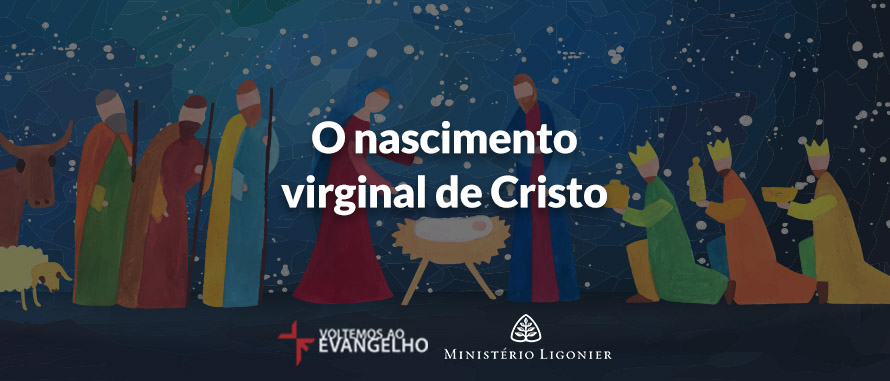With the great theologian and philosopher Anselmo of Canterbury, we wondered Cur deus homo?, Why Man-God?When we look at the biblical answer to this question, we see that the purpose behind Christ’s incarnation is to accomplish his work as God-appointed mediator. It is said in 1 Timothy 2. 5: “For there is one God and one Mediator between God and men, Christ Jesus, man, who has given himself. “Now the Bible speaks to many mediators with one? Small or small. A mediator is an agent who stands between two distant parties and needs reconciliation, but when Paul writes to Timothy about a lone mediator, a unique mediator, with one?In capital letters, it refers to this Ombudsman who is the supreme intercessor between God and fallen humanity. This Ombudsman, Jesus Christ, is in fact man-god.
In the early centuries of the Church, with the role of mediator and the ministry of reconciliation in sight, the Church had to face heretical movements that would upset the balance of this mediating character of Christ. Our only Mediator, who remains an agent of reconciliation of God and man, is the one who participates in both divinity and humanity. In the Gospel of John we read that it was the Eternal Logos, the Word, who became flesh and dwelt among us. He was the second person of the Trinity who assumed human nature to work for our redemption. In the 5th century, at the Council of Chalcedon in 451, the church had to fight a strange teaching called the Monophysite heresy. The term monophysite is derived from the prefix mono, which means “one”, and from the root phusis, which means “nature. ” or “gasoline”. The heretic Eutychus taught that Christ, in the incarnation, had a unique nature, which he called “anthropic nature. ” This theanthropic nature (combining the word theos, which means “God,” and anthropos, which means “man”) gives us a Savior who is a hybrid, but if we consider it carefully, he would be considered someone who does. He was neither God nor man. The Monophysite heresy has blurred the line between God and man, giving us a deified humanity or a humanized deity. It is against the background of this heresy that the Chalcedonian Creed insisted that Christ has two distinct natures: divine and human. He is a gay (truly human) and a God (truly divine, or truly God). These two natures are united in the mystery of the Incarnation, but it is important according to Christian orthodoxy that we understand that the divine nature of Christ is fully God and human nature is fully human. Thus, this person who had two natures, divine and human, was perfectly prepared to be our Mediator between God and men. A previous ecclesiastical council, the Council of Nicaea in 325, declared that Christ came “for us men and for our salvation. ” In other words, his mission was to bridge the gap that existed between God and humanity.
- It is important to note that.
- For Christ to be our perfect Mediator.
- The Incarnation was not a union between God and an angel.
- Or between God and a lower creature like an elephant or a chimpanzee.
- The necessary reconciliation was between God and human beings.
- In his role as mediator and man-God.
- Jesus assumed the role of the second Adam.
- Or what the Bible calls the last Adam.
- He entered into corporate solidarity with our humanity.
- Being a representative like Adam on his behalf.
- Paul.
- For example.
- In his letter to the Romans makes a contrast between the original Adam and Jesus as the second Adam.
- In Romans 5.
- Verse 15.
- It says: ?? because if for the offense of one many died.
- Much more the grace of God and the gift by the grace of one man.
- Jesus Christ.
- Abounded over many.
- Here we see the contrast between the tragedy that befell the human race because of the original Adam’s disobedience and the glory that is owed to believers because of Christ’s obedience.
- Paul goes on to say in verse 19.
- “For because by the disobedience of one man many have become sinners.
- So also by the obedience of the one many will become righteous.
- ” Adam had the role of mediator and failed miserably in his task.
- This failure was corrected by the perfect success of Christ.
- The man-God.
- Later.
- In Paul’s letter to the Corinthians.
- We will read these words: “For it is written: The first man.
- Adam.
- Became a living soul.
- The last Adam.
- However.
- Is a life-giving spirit.
- But it is not the spiritual first.
- But the natural; then the spiritual.
- The first man.
- Formed from the earth.
- Is earthly; the second man comes from heaven.
- As was the first man.
- The earth.
- So are other earthly men; and like the heavenly.
- So are the heavenly.
- And.
- Just as we brought the image of the earthly.
- Should we also bring the image of the heavenly? (1Col.
- 15: 45-49).
We then see the purpose of Christ’s first coming: the Logos took on a human nature, Vebo became flesh to achieve our redemption by fulfilling the role of perfect mediator between God and man. The new Adam is our champion, our representative, who meets the requirements of God’s law and obtains for us the blessing that God has promised his creatures if we obey His law. Like Adam, we could not obey the law, but the new Adam, our Ombudsman, perfectly fulfilled the law for us and obtained for us the crown of redemption; is the foundation of the joy of Christmas.

